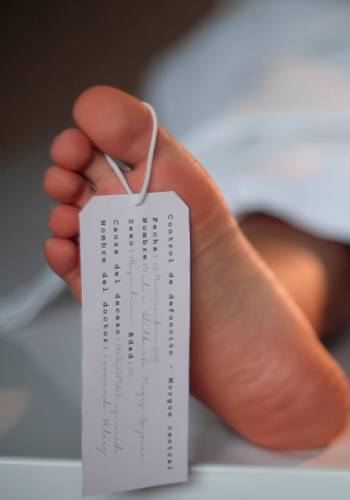A stab in the heart puts the colombian health system to the test
By: Tania Valbuena
Photos:
Health and Wellness

By: Tania Valbuena
Photos:

Slow transfer obstructs medical work
To review backgrounds, the group analyzed 240 patients with heart injuries who arrived at the Hospital
Occidente of Kennedy between 1999 and 2009. Of all the victims, 62.3 percent received surgical
attention, and regardless of treatment, 14.6 percent died among those patients who were attended to.
However, it is likely that prehospital mortality was 90 percent. This exceedingly high number of
fatalities motivated the team to find the underlying cause of the matter.
The aforementioned hospital is known for receiving the highest number of patients with trauma in Bogotá,
many of whom have been stabbed. “Day and night, they arrive with heart injuries, and the staff is
trained to recognize and respond quickly to victims,” said Isaza. The hospital has all the necessary
logistics to guarantee recovery and suitable postoperative management.
“Although heart injuries represent a challenge of speed, dexterity, and ability for the surgeon,
patients who go through surgery recover quickly,” said the main researcher. In the event of complex
heart damage (such as that produced by firearms) the clinical forecast is less favorable.
The health system put to the test
The research authors consider that more knowledge on case care at the different system levels is
necessary to get evidence that helps prevent or improve outcomes. In this sense, the study compiles the
necessary information for relevant agencies to know what should be improved in terms of logistics,
personnel, and education, among other areas, to take preventive measures and corrective actions.
For example, according to the researchers, it is important to “identify whether patients drank alcohol,
whether they took part in squabbles, how people can communicate with the emergency services when the
event happens, and whether they are taken to the hospital by patrol, ambulance, or taxi.” As for the
authors, if it is possible to have a map of the city to identify where these cases are more frequently
reported, they would achieve more effective responses.
Previous studies of this nature achieved the implementation in Bogotá of the “Carrot hour,” which
limited the open hours of bars or nightclubs until 2:00 a.m. Also, they encouraged the use of seat belts
in cars and helmets in motorcyclists.
Heart injuries are “a trauma that tests the entire health system,” said researcher Andrea Donoso, part
of the team, who added that institutional coordination and patient-care skills are required. “We hope
that these results materialize in public health strategies because minutes save lives,” she concludes.

Andrés Isaza, researcher and academic vicedean of the School of Medicine and Health Sciences, emphasized the fact that to increase the survival options of the people who arrive at the hospital with injuries, the implementation of better and more timely health public policies are required.